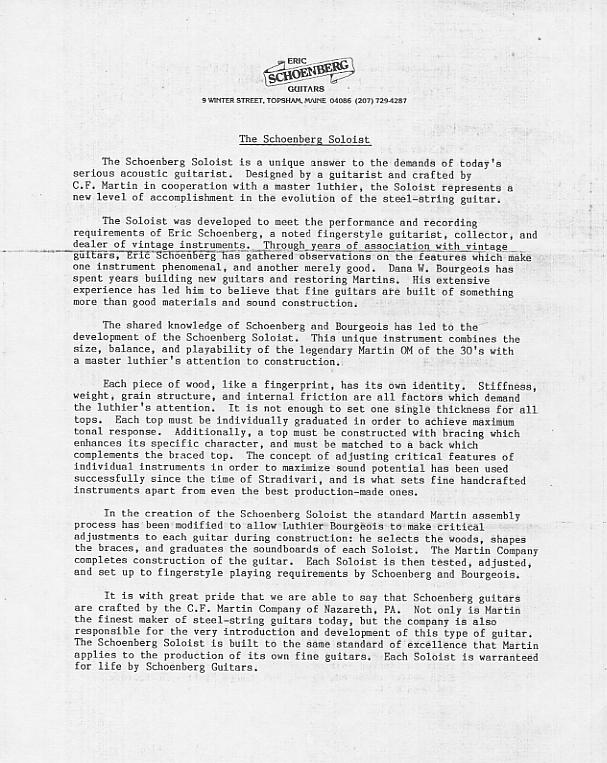
1987-1988
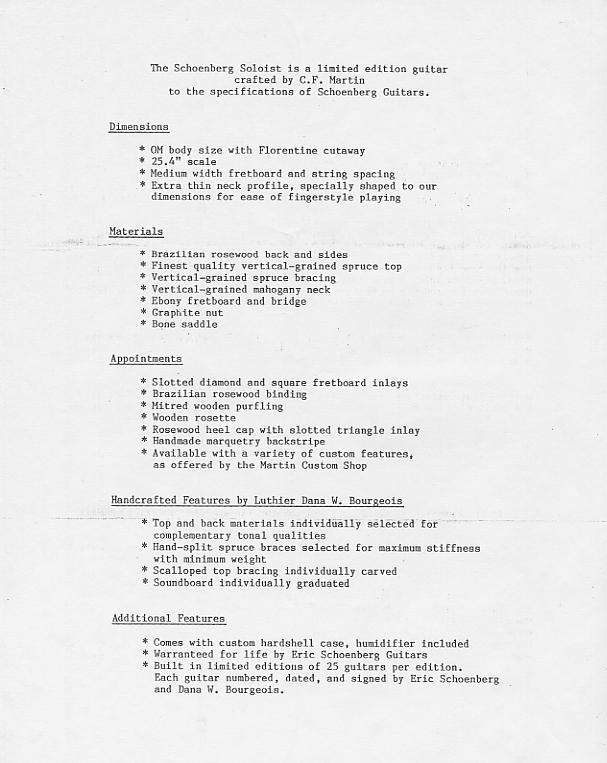
The revised Schoenberg Soloist
prospectus.
Dana Bourgeois, built approximately 100 Schoenberg guitars (about seven batches) at his shop in Topsham, Maine, traveling to voice the tops at the C. F. Martin & Company plant in Nazareth.
Throughout 1987 and 1988, Dana was assisted by his second apprentice, Ted Schieps (a jazz guitarist now living in France), who had taken over from T. J. Thompson, Dana's former apprentice (and, by now, Repair Shop Foreman at Elderly Instruments in Lansing, Michigan).
As Dana recalls, "I built guitars in runs of 10, 15, or 20 at a time. I selected all of the materials, made up most of the parts in my shop, and essentially sent guitar kits to Martin to assemble for us. During construction I went to the Martin plant and voiced each soundboard, making minute gradations based upon what I heard".
The idea was that Dana's individualized tap-tuning, or 'voicing', of the guitar tops during the Martin production process would enhance the instruments' handmade quality.
Dana Bourgeois performed the following in Topsham, Maine:
Selection of top
wood.
Selection of back
& side woods.
Matching of tops
and backs.
Top thicknessing.
Top shaping & joining.
Soundhole rosette
inlay.
Back shaping & joining.
Side bending (from 1989 on).
Brace carving (scalloping).
Top bracing.
Bridge carving.
Top voicing (aka
tap tuning)
--at C. F. Martin & Company in Nazareth, Pennsylvania.
Final setup.
C.
F. Martin & Company performed the following in Nazareth, Pennsylvania:

Hand bending of sides (prior to
1989).
Neck carving (from
special template provided by Bourgeois).
Back bracing.
Body assembly.
Neck set (with average
bridge height specified by Bourgeois).
Application of standard lacquer finish.
Installation of standard Grover tuners.
C. F. Martin & Company
serial number applied on brass plate on neck block.
The OM Cutaway Soloists were identical to the original
prototype Soloist
with the following exceptions:
Plain (no sunburst) finish.
Bone nut (not graphite).
Adjustable truss rod.
"T" frets (not bar frets).
Brazilian Rosewood was standard for the back and sides.
The following are details of a typical Schoenberg
Soloist:
(This example is from 1988, serial number 476,471):








Upon completion, each Schoenberg Soloist carried an engraved plaque inside stating, "Made expressly for Schoenberg Guitars by C. F. Martin Co.", followed by a Martin serial number. Never before had Martin been so straightforward about their manufacturing input into instruments bearing another name. The guitars also bore an internal label signed by both Schoenberg and Bourgeois.

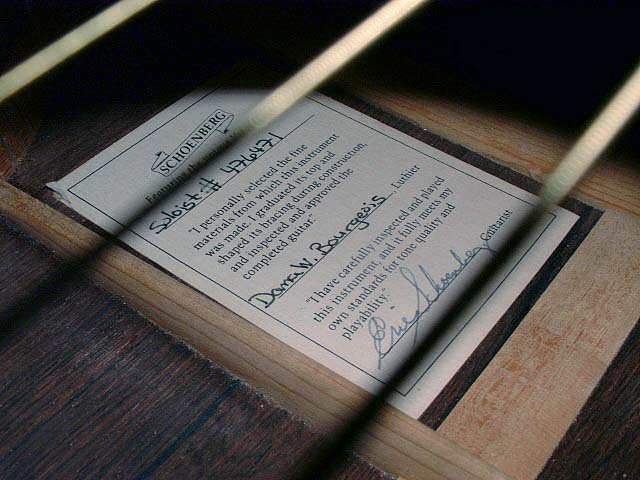
("Featuring the unique Voiced Top" is obscured by a string
beneath the Schoenberg logo).
Eric Schoenberg's favorite personal instrument, which he used from 1989 through 2001, was a 1988 Soloist, made from Englemann Spruce and Brazilian Rosewood:
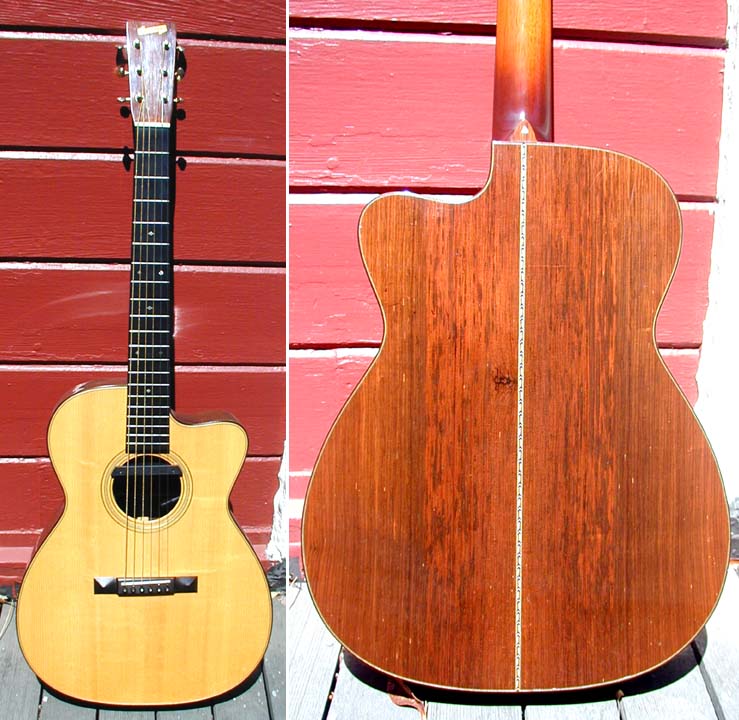
"The neck is 1 7/8" wide at the nut, and spacing at the bridge is 2 3'8", the same as the vintage 12-fret Martins of yesteryear. I owned this guitar and played and travelled with it extensively for a dozen years; fell in love with it when it first arrived new from the Martin factory, but it had been custom ordered (the wide neck). I flipped over this neck; though wider, there is a magical perfection about the shape. Pure luck, most likely, but nevertheless, wonderful. A year later, when the customer called asking us to cut the neck down, I offered him a new one and kept this one. The top came to us as Engelmann, but there's nothing in the tone of this instrument that fits any of the generalities of how Engelmann is supposed to sound. It is clear and strong, cuts through large groups easily; not warm, but focused. Either it was mistaken as Engelmann by the supplier, or else it proves that tonal generalities about different species of spruce are just that: generalities". --Eric Schoenberg

"Care and Feeding" booklet
that accompanied each Soloist.
Schoenberg's proprietary
"Soloist" strings.
Dana Bourgeois was a 'fan' of Martin D size guitars, and personally owned a 1953 Martin D-28 with an Englemann Spruce top. Thus, although the vast majority of Soloists are OM cutaways, serial # 472,277 was a D, or Dreadnought, size, and # 474,751 was a cutaway D.

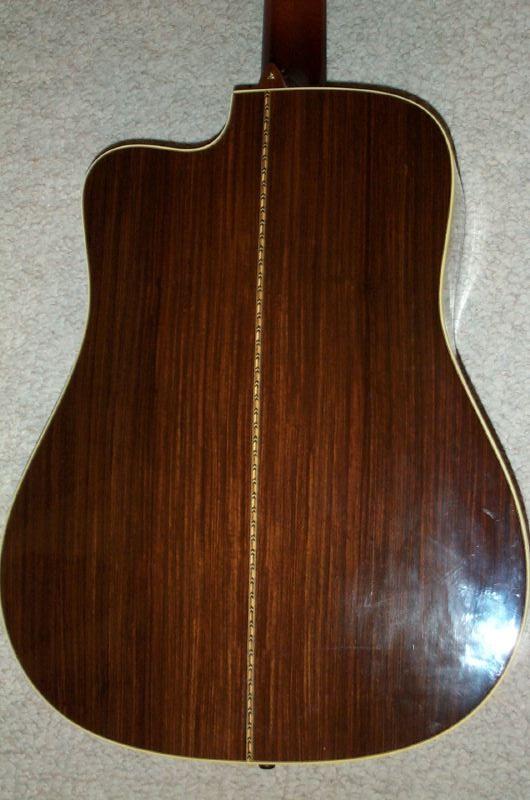
A Dreadnought Cutaway Soloist.
Another D cutaway was built with a German Spruce top, Brazilian Rosewood back and sides, Martin style "42" inlays, and a Maple neck. This guitar was loaned to Bluegrass guitarist Tony Rice, who 'rejected' it simply because he did not like cutaways. Dana Bourgeois kept it, and later sold it to Jack Beck, acclaimed Scottish folk-singer. Its serial number is 482,966.
Jack Beck and Dana Bourgeois in
Maine c. 1990.
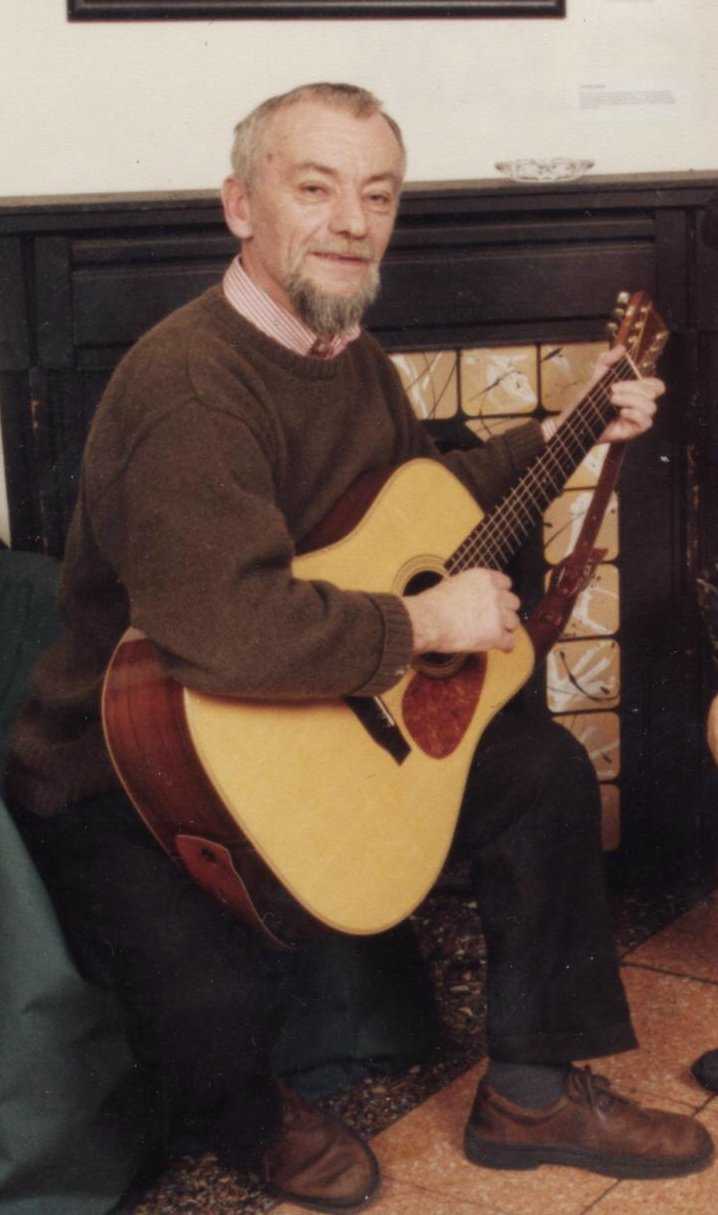
Jack Beck playing his D cutaway
Soloist.